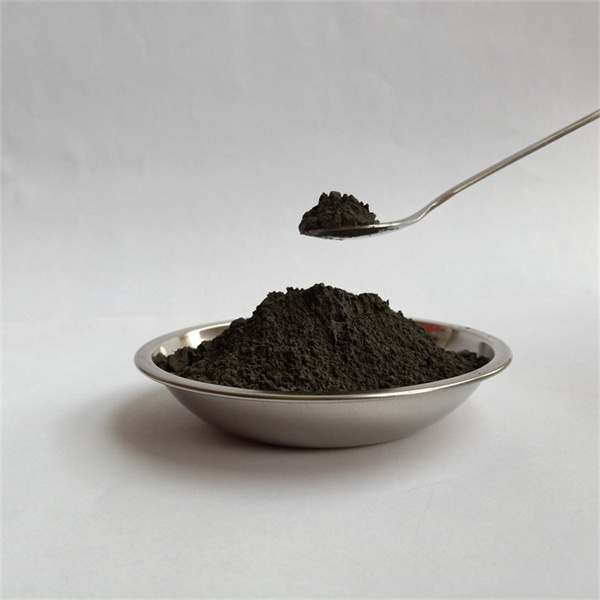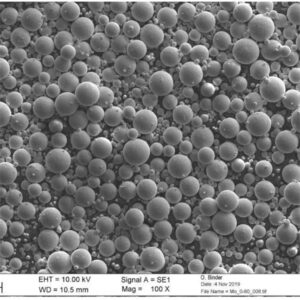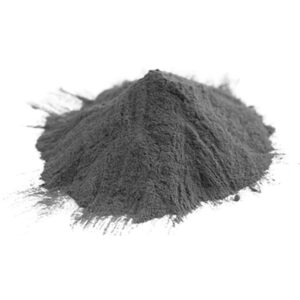Gambaran umum tentang Bubuk manufaktur aditif
Serbuk manufaktur aditif mengacu pada bahan paduan logam yang diproduksi dalam bentuk serbuk khusus untuk teknik pencetakan 3D seperti peleburan laser selektif (SLM), sintering laser logam langsung (DMLS), peleburan berkas elektron (EBM), dan pengaliran pengikat. Distribusi ukuran partikel, morfologi, kimia, dan sifat bubuk yang dioptimalkan memfasilitasi fusi lapisan demi lapisan yang tepat ke dalam komponen penggunaan akhir.
Tabel 1: Ikhtisar Atribut Serbuk Manufaktur Aditif
| Atribut | Deskripsi |
|---|---|
| Bahan Baku | Partikel paduan logam berbentuk bola |
| Metode Produksi | Atomisasi gas, elektrolisis, karbonil |
| Bahan yang Digunakan | Titanium, aluminium, baja tahan karat, superalloy, baja perkakas |
| Ukuran Partikel | 10 - 45 mikron tipikal |
| Properti Utama | Kemampuan mengalir, kepadatan, struktur mikro, kemurnian |
| Aplikasi Utama | Kedirgantaraan, medis, otomotif, industri |
Berkat kontrol yang cermat terhadap karakteristik seperti bentuk partikel, distribusi ukuran, kimia, dan struktur mikro, serbuk AM mengalir dengan lancar, dikemas secara padat, dan menyatu secara konsisten lapis demi lapis untuk menciptakan komponen logam yang rumit dan kuat dengan sifat mekanis yang sesuai atau melebihi rute fabrikasi tradisional.

Metode Produksi Serbuk Logam untuk AM
Serbuk aditif menggunakan beberapa rute produksi utama untuk menghasilkan serbuk bulat halus dengan kimia yang diinginkan, pembentukan butiran, morfologi permukaan, tingkat porositas, dan spesifikasi distribusi partikel yang diperlukan oleh proses AM.
Tabel 2: Perbandingan Metode Produksi Serbuk Manufaktur Aditif
| Metode | Deskripsi | Pro / Kontra |
|---|---|---|
| Atomisasi gas | Gas bertekanan tinggi memecah aliran logam cair menjadi tetesan | Partikel yang seragam, fleksibilitas paduan sisi negatifnya adalah biaya yang lebih tinggi |
| Atomisasi plasma | Busur elektroda melelehkan/menghancurkan logam menjadi partikel | Bubuk yang sangat bulat, dalam jumlah kecil |
| Hidrida-dehidrida | Serbuk paduan didekomposisi melalui penyerapan hidrogen | Serbuk yang sangat halus dengan kemampuan mengalir yang baik tetapi kepadatannya lebih rendah |
| Elektrolisis | Bahan baku logam dilarutkan dari anoda menjadi bubuk | Biaya lebih rendah tetapi bentuk serpihan tidak beraturan |
Seiring dengan kemajuan kemampuan perangkat keras AM yang memungkinkan resolusi yang lebih baik hingga 20 mikron, distribusi ukuran partikel bubuk yang lebih ketat yang berpusat di antara 15 hingga 45 mikron menjadi sangat penting - yang disebut dengan adopsi atomisasi gas dan plasma yang lebih besar yang memfasilitasi serbuk meteorit berbentuk bola yang ideal untuk pengemasan yang padat dan penggarukan yang halus.
Pencocokan rute produksi terhadap persyaratan proses AM yang dimaksudkan memastikan spesifikasi serbuk yang optimal menyeimbangkan trade off kinerja.
Jenis-jenis bubuk manufaktur aditif logam
Berbagai paduan logam yang diproduksi dalam bentuk serbuk kini telah diadopsi secara luas di seluruh teknik AM mulai dari polimer yang tidak mahal hingga superalloy yang tahan api dan mahal berkat kebebasan desain yang ditingkatkan yang memfasilitasi konsolidasi komponen ditambah kinerja properti yang ditingkatkan di luar batas pengecoran atau pemesinan.
Tabel 3: Bahan Serbuk Logam Umum yang Dimanfaatkan untuk AM
| Kelas Bahan | Jenis Paduan | Deskripsi |
|---|---|---|
| Paduan aluminium | AlSi10Mg, AlSi7Mg | Ringan di seluruh kedirgantaraan, otomotif |
| Paduan Titanium | Ti-6Al-4V, Ti 6Al4V ELI | Implan penerbangan dan biomedis berkekuatan tinggi |
| Baja tahan karat | 304L, 316L, 17-4PH | Ketahanan korosi untuk perangkat keras kelautan |
| Baja perkakas | H13, Menikah 300 | Alat potong dan cetakan dengan kekerasan ekstrem |
| Nikel Superalloys | Inconel 718, Inconel 625 | Mesin turbo seperti mesin kedirgantaraan |
| Paduan eksotis | Tembaga, krom kobalt, tungsten | Komposisi khusus mendorong batas |
Lingkungan fusi unggun serbuk yang dioptimalkan memfasilitasi pemrosesan komposisi bahan yang secara tradisional menantang di luar rintangan manufaktur konvensional. Hal ini memungkinkan inovasi di seluruh kebutuhan manajemen termal kemasan elektronik, katup dan pompa minyak & gas untuk lingkungan yang ekstrem, komponen balap mobil, dan perangkat keras satelit.
Pemilihan pilihan paduan yang optimal secara hati-hati terhadap prioritas desain seputar berat, biaya, kekuatan, dan kompatibilitas lingkungan memfasilitasi komponen aditif berkinerja tinggi yang ideal yang tidak tertandingi oleh proses lama.
Properti Utama dari bubuk manufaktur aditif
Untuk memastikan pengendapan material yang halus dan efektif yang penting untuk mencapai komponen cetak yang padat dan bebas cacat, produk serbuk manufaktur aditif harus memenuhi persyaratan ketat yang terkait dengan karakteristik aliran, kepadatan yang terlihat, porositas residu, struktur mikro, dan batas kontaminasi.
Tabel 4: Properti Serbuk AM Logam Khas
| Karakteristik | Nilai-nilai Khas | Metode Pengujian | Pentingnya |
|---|---|---|---|
| Morfologi bubuk | Halus hampir bulat | Pencitraan SEM | Pengemasan dan aliran tempat tidur bubuk |
| Distribusi ukuran partikel | 10μm - 45μm | Analisis difraksi laser | Resolusi lapisan, membangun kecepatan |
| Kepadatan yang tampak dan kerapatan keran | Masing-masing 65-80% / 80-92% | Pengukuran gravimetri melalui flowmeter Hall | Resolusi dan kualitas cetak |
| Laju aliran | 23-33 detik untuk 50 g | Tes corong berwaktu | Performa penyebaran bubuk |
| Porositas sisa | <1% | Piknometri gas | Kepadatan dan sifat mekanik |
| Kontaminasi lembu/N | <1000 ppm / <500 ppm | Analisis gas inert | Penggunaan ulang bubuk, hindari keretakan dalam proses |
Memverifikasi properti bubuk yang penting pada saat produksi menggunakan instrumentasi canggih memfasilitasi pengulangan yang mengatasi penyimpangan properti batch-ke-batch menggunakan penyesuaian proses statistik waktu nyata.
Pencocokan serbuk berkarakteristik baik yang memiliki proses pembuatan yang stabil terhadap toleransi mesin yang ketat memastikan proses produksi AM yang andal.
Spesifikasi untuk bubuk manufaktur aditif logam
Untuk memastikan komponen berkualitas tinggi dari sistem perangkat keras AM, serbuk paduan logam harus sesuai dengan kontrol kimia yang lebih ketat dan distribusi dimensi yang relatif lebih baik daripada metalurgi serbuk konvensional yang diperuntukkan untuk pemadatan dan sintering saja.
Tabel 5: Nilai Spesifikasi Serbuk Aditif Umum
| Parameter | Rentang Umum | Metode pengujian | Pentingnya |
|---|---|---|---|
| Distribusi ukuran partikel | 15μm - 45μm | Difraksi laser | Mengontrol resolusi fitur minimum |
| Pengotor unsur | <1000 ppm | Spektroskopi ICP | Rasio penggunaan ulang bubuk |
| Kepadatan yang tampak | 65-85% teoretis | Analisis gravimetri melalui flowmeter Hall | Mempengaruhi kinerja mekanis |
| Kerapatan ketukan | 80-95% teoretis | Analisis gravimetri | Rasio pengepakan lapisan |
| Laju aliran aula | <40 detik untuk 50 g bubuk | Uji corong berwaktu | Konsistensi penyebaran bedak tabur |
| Bentuk partikel | > 80% berbentuk bola | Pencitraan SEM | Kerataan fluidisasi unggun daya |
| Porositas sisa | <1% | Piknometri gas | Kepadatan dan sifat mekanik |
Pemantauan formula Koefisien Keseragaman dan Rasio Laju Aliran canggih yang dikembangkan untuk serbuk AM logam memberikan wawasan yang lebih dalam daripada aliran Hall sederhana yang memastikan kinerja aplikasi yang andal.
Dan dengan secara khusus menyesuaikan distribusi ukuran, pasokan bahan kimia bubuk secara aktif memfasilitasi peningkatan proses yang mengejar resolusi yang lebih baik, kecepatan pembuatan yang lebih cepat, dan proses produksi yang lebih lama tanpa gangguan yang sangat penting untuk adopsi AM.
Nilai dan Standar untuk bubuk manufaktur aditif
Dengan manufaktur aditif yang menembus lingkungan yang diatur yang mencakup kategori kedirgantaraan, medis, otomotif, dan industri, metode terstandardisasi untuk menentukan, menguji, mengesahkan, dan mengendalikan serbuk logam menjadi sangat penting untuk memastikan pengulangan, kualitas, dan keamanan.
Tabel 6: Standar yang Sedang Berkembang untuk Serbuk AM Logam
| Standar | Cakupan | Tujuan |
|---|---|---|
| ASTM F3049 | Panduan standar untuk mengkarakterisasi serbuk AM | Menetapkan metode pengujian tolok ukur yang menilai atribut bubuk yang umum |
| ASTM F3056 | Spesifikasi untuk bubuk paduan nikel | Kimia, manufaktur, frekuensi pengujian ulang |
| ASTM F3301 | Praktik untuk metode proses sekunder yang diterapkan pada komponen AM | Menentukan teknik pasca-pemrosesan yang dapat diterima |
| AS9100 rev D | Pemasok yang disetujui sektor kedirgantaraan | Sistem mutu untuk industri yang diatur |
| ISO/ASTM 52921 | Terminologi standar untuk AM - berkoordinasi dengan norma-norma global | Memastikan terminologi dan spesifikasi bahan bubuk AM yang terpadu |
Ketika AM merambah industri komersial dan pertahanan lebih lanjut yang membutuhkan verifikasi ketat dan ketertelusuran komponen, praktik pengujian standar, dokumentasi lacak balak, tingkat pengambilan sampel lot, kontrol lingkungan fasilitas, dan pelatihan personel menjadi mandat. Kepatuhan memastikan pengguna memiliki silsilah material lengkap dan transparansi proses yang memfasilitasi ketelitian kualifikasi yang diharapkan dalam aplikasi penting.
Lembaga pemerintah juga mendukung pengembangan yang sedang berlangsung seputar spesifikasi bahan, teknik pengujian dan praktik terbaik seiring kemajuan AM di berbagai pasar. Kolaborasi antara produsen bubuk, OEM printer, dan pengguna industri akan terus mendorong pembandingan yang lebih baik untuk meningkatkan performa dan keandalan di dunia nyata.
Aplikasi Bubuk Aditif Logam
Berkat perluasan kemampuan sistem printer dan ketersediaan serbuk yang dioptimalkan untuk kebutuhan AM, manufaktur aditif mengubah ekonomi produksi di berbagai industri, mulai dari kedirgantaraan hingga barang-barang konsumen.
Tabel 7: Aplikasi Serbuk Manufaktur Aditif Logam Primer
| Sektor | Contoh Proses Manufaktur | Keuntungan Biaya/Performa |
|---|---|---|
| Mesin kedirgantaraan | Nozel dan manifold Inconel 718 melalui DMLM | Mengurangi waktu tunggu, meningkatkan rasio beli-ke-terbang |
| Turbin penerbangan | Braket struktural Ti64 melalui EBM | Penghematan berat, konsolidasi bagian |
| Implan biomedis | Ortopedi krom kobalt oleh DMLS | Peningkatan tingkat integrasi tulang |
| Balap otomotif | Paduan dan geomeri khusus melalui SLM | Ketahanan panas/getaran yang tinggi dan penghematan berat |
| Jam tangan mewah | Komponen mikro emas dan baja oleh SLM | Kebebasan desain/gaya dan iterasi yang cepat |
Berkat opsi material yang diperluas serta volume build yang lebih besar, metal AM mengubah hambatan produksi yang dihadapi proses konvensional - memfasilitasi bobot yang lebih ringan dengan kekuatan yang lebih tinggi, ketahanan panas yang lebih baik melalui saluran pendinginan generatif, konsolidasi komponen, serta mengurangi total waktu tunggu.
Keunggulan manufaktur ini memacu adopsi teknik AM yang menggantikan produksi tradisional di seluruh industri yang memiliki sensitivitas biaya setelah skala ekonomi terwujud. Inovasi material yang berkelanjutan menjanjikan perluasan aplikasi ke dalam lingkungan kimia, tekanan, korosif, dan beban yang lebih ekstrem.
Pemasok Serbuk AM Logam
Berbagai macam produsen serbuk sekarang memasok bahan logam khusus yang memenuhi kebutuhan manufaktur aditif di seluruh peralatan pemula untuk bengkel kerja yang lebih kecil hingga penyedia kedirgantaraan tingkat 1 yang besar dan inovator paduan khusus yang mendorong batas kemampuan AM.
Tabel 8: Serbuk Logam Terkemuka untuk Pemasok Aditif
| Perusahaan | Portofolio | Deskripsi |
|---|---|---|
| Praxair | Paduan titanium, nikel, kobalt | Produsen terkemuka gas dan bubuk yang dikabutkan |
| Sandvik | Baja tahan karat | Paduan berkinerja tinggi termasuk baja dupleks dan baja maraging |
| Teknologi LPW | Aluminium, titanium, paduan nikel | Produk paduan dan pengikat khusus |
| Aditif Tukang Kayu | Baja perkakas, baja tahan karat | Paduan khusus yang memanfaatkan keahlian pembuatan baja |
| AP&C | Titanium, superalloy nikel | Penyedia solusi siklus hidup bubuk |
| Hoganas | Baja tahan karat | Paduan berkinerja tinggi termasuk baja dupleks dan baja maraging |
Para pemimpin serbuk ini secara aktif berkolaborasi dalam industri AM bersama dengan OEM printer, peneliti, dan kelompok standardisasi untuk terus meningkatkan pengulangan dimensi, mengurangi tingkat porositas, dan meningkatkan estetika komponen jadi serta spesifikasi mekanis.
Analisis Biaya untuk Serbuk AM Logam
Harga untuk serbuk AM logam umum berkisar secara dramatis berdasarkan komposisi, rute produksi, tingkat distribusi, persyaratan pengujian, dan volume pembelian - tetapi umumnya menuntut premi yang substansial di atas serbuk konvensional untuk aplikasi pengepresan dan sintering saja.
Tabel 9: Harga Bubuk Aditif Logam
| Bahan | Kisaran Harga | Pemicu Biaya |
|---|---|---|
| Paduan aluminium | $50-120 per kg | Biaya input logam yang lebih rendah tetapi biaya alat penyemprot gas yang tinggi |
| Baja tahan karat | $50-200 per kg | 316L lebih mahal dari kelas 17-4 atau 15-5 |
| Baja perkakas | $60-220 per kg | Biaya elemen paduan yang lebih tinggi |
| Paduan Titanium | $200-600 per kg | Memproses ekstraksi dan penanganan intensif |
| Nikel Superalloys | $200-1000 per kg | Hasil elemen yang rendah dan kemampuan untuk mencetak kritis bebas retak |
| Eksotik seperti Ta atau W | $500-2000 per kg | Ketersediaan produksi global yang sangat rendah saat ini |
Harga premium di atas serbuk konvensional dihasilkan dari ukuran batch yang jauh lebih rendah, biaya input material yang lebih tinggi, dan perbedaan pemrosesan yang mengoptimalkan karakteristik seperti kebulatan dan kimia yang terkontrol yang memfasilitasi kebutuhan AM.
Seiring dengan meluasnya adopsi printer, persaingan yang lebih besar dan skala produksi kemungkinan besar akan secara bertahap mengurangi biaya selama 5-10 tahun - mengikuti peta jalan kematangan teknologi pada umumnya. Tetapi, harga specialty grade akan tetap jauh lebih tinggi secara signifikan, yang mencerminkan dinamika pasar input logam yang mendasarinya.
PERTANYAAN YANG SERING DIAJUKAN
T: Bagaimana cara meremajakan serbuk AM logam bekas/daur ulang untuk siklus pencetakan tambahan?
J: Serbuk diayak untuk menghilangkan partikel besar yang melebihi 100 mikron, diseimbangkan kembali secara kimiawi untuk memulihkan kadar oksigen/nitrogen, dan dicampur dengan bahan murni yang proporsional untuk memastikan penggunaan ulang yang sesuai tanpa menurunkan kualitas komponen cetakan akhir.
T: Spesifikasi kritis apa yang paling berbeda antara AM dan serbuk pengepresan konvensional?
J: Distribusi ukuran partikel yang lebih sempit dengan rata-rata 25 mikron, kerapatan semu dan kerapatan keran yang lebih tinggi, bentuk serbuk meteorit yang lebih halus, dan kadar oksigen plus nitrogen yang lebih rendah membedakan kebutuhan AM dari metalurgi serbuk tradisional yang hanya membutuhkan toleransi yang lebih longgar. Mencapai karakteristik yang dioptimalkan ini memfasilitasi pencetakan AM yang bebas cacat.
T: Berapa kali biasanya paduan bubuk AM umum dapat digunakan kembali?
J: Superalloy titanium dan nikel yang serupa mendekati 20 siklus sebelum membutuhkan pengisian ulang dengan bubuk baru. Baja tahan karat yang lebih murah dapat mencapai 50+ siklus penggunaan ulang. Aluminium dan kualitas yang sangat reaktif memiliki durasi daur ulang paling terbatas di bawah 5 siklus.
T: Potensi peningkatan properti apa yang ada pada serbuk AM logam dibandingkan bahan yang sudah ada?
J: Menggabungkan rasio kekuatan-terhadap-berat yang ditinggikan dengan menipiskan/melubangi bagian dengan saluran tertanam yang memfasilitasi aliran fluida, perpindahan panas, atau penguatan struktural membuka konfigurasi desain generatif yang merevolusi komponen yang diproduksi yang tidak mungkin dilakukan dengan pemesinan subtraktif atau proses pengecoran satu langkah saja.
T: Kategori industri mana yang saat ini menunjukkan janji terbesar untuk pertumbuhan serbuk AM logam?
J: Sektor kedirgantaraan, peralatan medis, otomotif, dan minyak/gas memimpin ekspansi arus utama awal berkat komponen bernilai tinggi yang membenarkan investasi Litbang. Namun, ekspektasi jangka panjang memperkirakan adopsi massal yang pada akhirnya akan meningkatkan daya tahan barang konsumen dengan memanfaatkan keunggulan fleksibilitas AM seiring dengan menurunnya biaya sistem.






